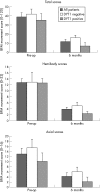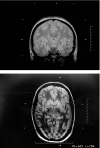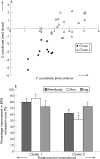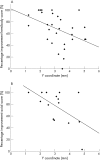Effect of electrode contact location on clinical efficacy of pallidal deep brain stimulation in primary generalised dystonia
- PMID: 17442760
- PMCID: PMC2095629
- DOI: 10.1136/jnnp.2006.109694
Effect of electrode contact location on clinical efficacy of pallidal deep brain stimulation in primary generalised dystonia
Abstract
Objectives: To determine the effect of electrode contact location on efficacy of bilateral globus pallidus internus (GPi) deep brain stimulation (DBS) for primary generalised dystonia (PGD).
Subjects and methods: A consecutive series of 15 patients with PGD (10 females, mean age 42 years, seven DYT1) who underwent bilateral GPi DBS, were assessed using the Burke-Fahn-Marsden (BFM) dystonia scale before and 6 months after surgery. The position of the stimulated electrode contact(s) was determined from the postoperative stereotactic MRI. Contralateral limb and total axial BFM subscores were compared with the location of the stimulated contact(s) within the GPi.
Results: The mean total BFM score decreased from 38.9 preoperatively to 11.9 at 6 months, an improvement of 69.5% (p<0.00001). Cluster analysis of the stimulated contact coordinates identified two groups, distributed along an anterodorsal to posteroventral axis. Clinical improvement was greater for posteroventral than anterodorsal stimulation for the arm (86% vs 52%; p<0.05) and trunk (96% vs 65%; p<0.05) and inversely correlated with the y coordinate. For the leg, posteroventral and anterodorsal stimulation were of equivalent efficacy. Overall clinical improvement was maximal with posteroventral stimulation (89% vs 67%; p<0.05) and inversely correlated with the y (A-P) coordinate (r = -0.62, p<0.05).
Conclusion: GPi DBS is effective for PGD but outcome is dependent on contact location. Posteroventral GPi stimulation provides the best overall effect and is superior for the arm and trunk. These results may be explained by the functional anatomy of GPi and its outflow tracts.
Conflict of interest statement
Competing interests: None.
References
Publication types
MeSH terms
LinkOut - more resources
Full Text Sources
Other Literature Sources
Miscellaneous




